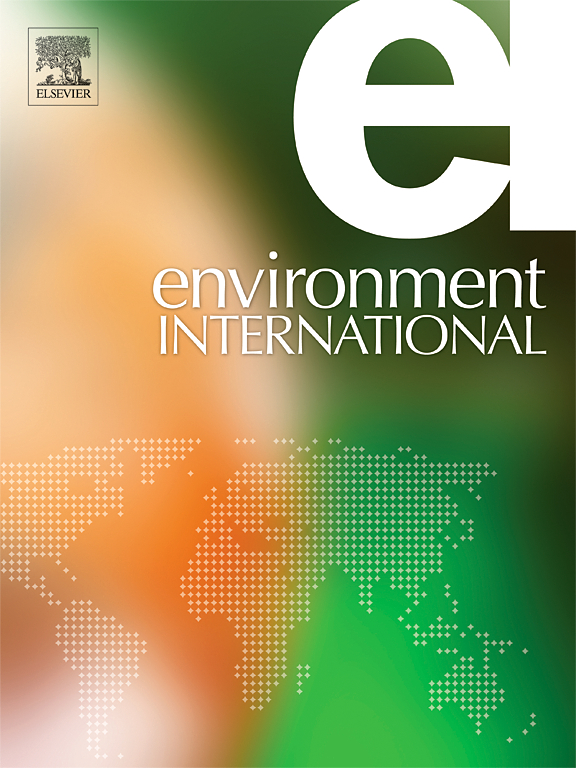基于crispr的全基因组筛选发现E2F转录因子1是马兜铃酸诱导肾毒性的调节因子和治疗靶点
IF 9.7
1区 环境科学与生态学
Q1 ENVIRONMENTAL SCIENCES
引用次数: 0
摘要
马兜铃酸I (AAI)广泛存在于马兜铃属中药中,对肾小管上皮细胞有明显的损伤作用。全基因组筛选已被证明是识别与外源物质毒性相关的关键基因的有力工具。为了鉴定未发现的参与aai诱导肾毒性的关键基因,在人肾-2 (HK-2)细胞系中进行了全基因组CRISPR文库筛选。在改变的sgrna中,aai处理组存活的HK-2细胞中观察到靶向E2F转录因子1 (E2F1)基因的sgrna显著富集。有趣的是,E2F1的作用在AAI肾毒性的研究中尚未被发现。进一步研究发现,E2F1通过激活p53信号通路和上调BAK、BAX等促凋亡基因促进细胞凋亡。此外,通过高通量实验和参考中药数据库(HERB),大麻二酚(cannabidiol, CBD)通过抑制NF-κ b通路活性而被鉴定为E2F1的抑制剂。体外和体内模型证实,CBD抑制aai诱导的E2F1上调,从而抑制p53介导的细胞凋亡。总之,本研究强调了E2F1在AAI诱导的肾细胞凋亡中的关键作用,并确定了CBD作为减轻AAI肾毒性的新候选药物。本文章由计算机程序翻译,如有差异,请以英文原文为准。


Genome-wide CRISPR-based screen identifies E2F transcription factor 1 as a regulator and therapeutic target of aristolochic acid-induced nephrotoxicity
Aristolochic Acid I (AAI) is widely present in traditional Chinese medicines derived from the Aristolochia genus and is known to cause significant damage to renal tubular epithelial cells. Genome-wide screening has proven to be a powerful tool in identifying critical genes associated with the toxicity of exogenous substances. To identify undiscovered key genes involved in AAI-induced renal toxicity, a genome-wide CRISPR library screen was conducted in the human kidney-2 (HK-2) cell line. Among the altered sgRNAs, a significant enrichment of those targeting the E2F transcription factor 1 (E2F1) gene was observed in surviving HK-2 cells in the AAI-treated group. Interestingly, the role of E2F1 had not been previously explored in studies of AAI nephrotoxicity. Further investigations revealed that E2F1 promotes apoptosis by activating the p53 signaling pathway and upregulating pro-apoptotic genes, such as BAK and BAX. Additionally, using the high-throughput experiment- and reference-guided database of traditional Chinese medicine (HERB), cannabidiol (CBD) was identified as an inhibitor of E2F1 by suppressing the activity of NF-κB pathway. In vitro and in vivo models confirmed that CBD inhibits AAI-induced upregulation of E2F1, thereby suppressing p53-mediated apoptosis. In conclusion, this study highlights the crucial role of E2F1 in AAI-induced renal cell apoptosis and identifies CBD as a novel therapeutic candidate for mitigating AAI nephrotoxicity.
求助全文
通过发布文献求助,成功后即可免费获取论文全文。
去求助
来源期刊

Environment International
环境科学-环境科学
CiteScore
21.90
自引率
3.40%
发文量
734
审稿时长
2.8 months
期刊介绍:
Environmental Health publishes manuscripts focusing on critical aspects of environmental and occupational medicine, including studies in toxicology and epidemiology, to illuminate the human health implications of exposure to environmental hazards. The journal adopts an open-access model and practices open peer review.
It caters to scientists and practitioners across all environmental science domains, directly or indirectly impacting human health and well-being. With a commitment to enhancing the prevention of environmentally-related health risks, Environmental Health serves as a public health journal for the community and scientists engaged in matters of public health significance concerning the environment.
 求助内容:
求助内容: 应助结果提醒方式:
应助结果提醒方式:


